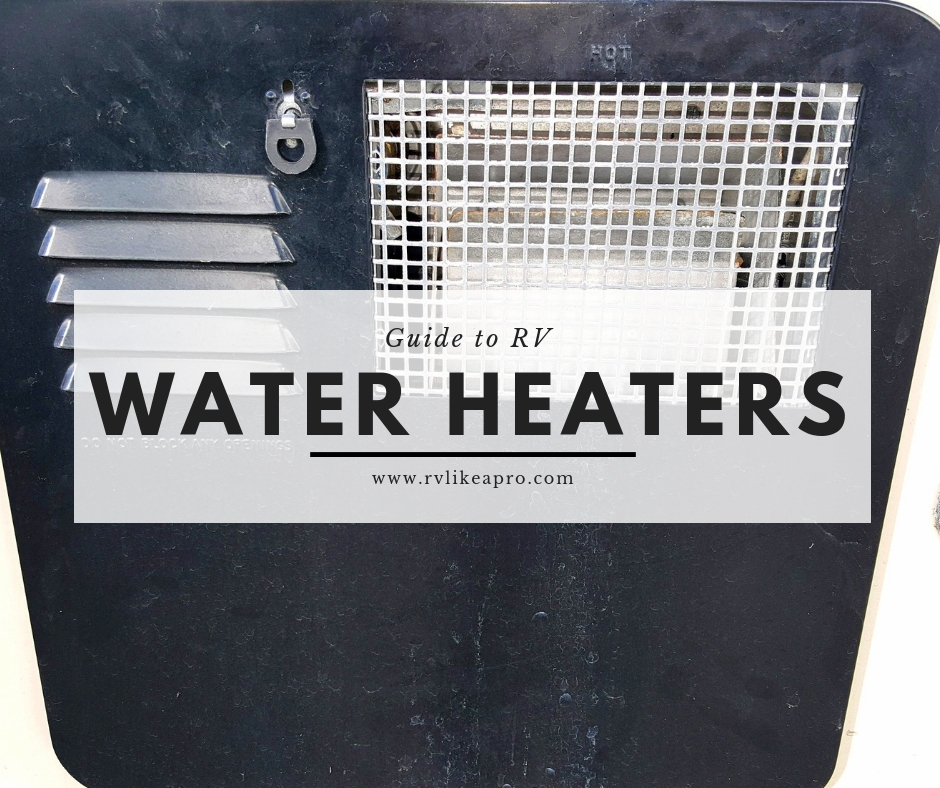
Guide to RV Water Heaters
RV water heaters are really pretty simple. For the purpose of this article we are going focus on water heaters with tanks. There are some tank-less water heaters that are usually on demand style water heaters. I generally don’t see too many of these tank-less water heaters because the manufacturers have found that they don’t work very well and customers often complain about them.
Before getting into how to operate an RV water heater, it is important to be sure that you have de-winterized your water heater before operation. In other words be sure that your valves are turned to the correct positions on the back side of the water heater, the plug is in, and you have pressurized your water lines and filled the water heater.
To fill a water heater, open the kitchen sink hot water tap and allow the air to burp out of the tank. When you have a nice steady stream of water the water heater is full.
The majority of RV water heaters have either 6 or 10 gallon tanks. Every RV water heater operates on propane (LP). In addition, some water heaters also heat the water using electric (if the RV is plugged into 110 electricity).
Tip: If you heat with both propane and electricity at the same time it will heat the water much quicker.
There are two main manufacturers of water heaters: Suburban and Atwood. Both water heaters work well and most RV manufacturers use both brands.
A Suburban water heater is identifiable by the metal plug located in the bottom center of the water heater. On the inside of that plug there will be an anode rod attached to it (if the water heater has the ability to work on electric power). The anode rod is the 6-inch rod that sticks into the water tank when the plug is installed. It is made out of aluminum magnesium and zinc and it is wrapped around a wire the size of a coat hanger.
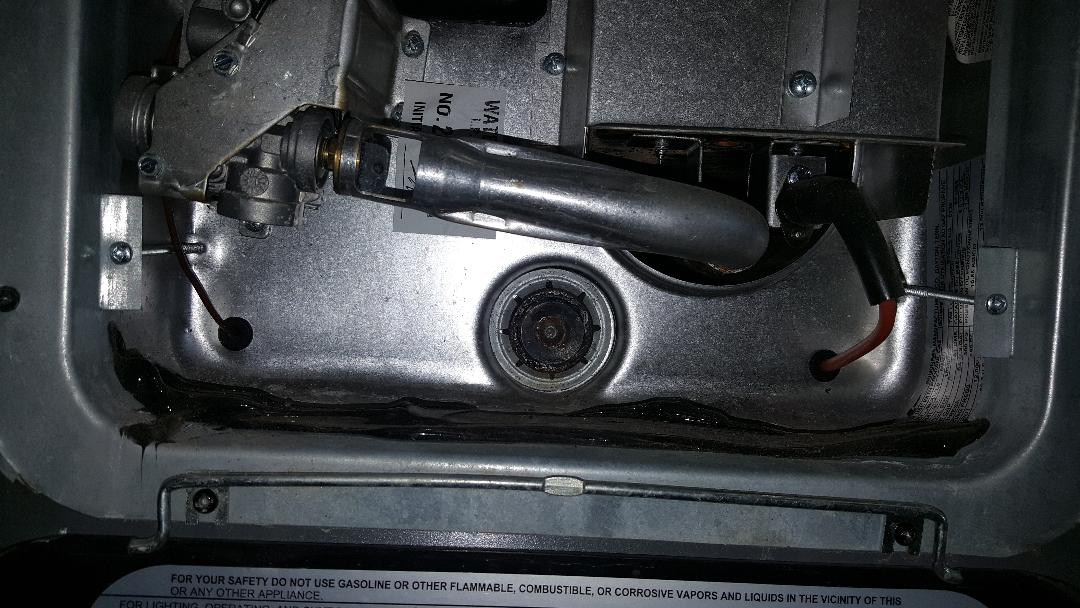
Suburban water heater. This model works only off LP gas.
The anode rod is placed inside your water heater to protect it from corrosion through process call electrolysis. The anode rod does shrink over time. A good scenario is if you have great water where you’re camping and your anode rod might last last 2 or 3 years. If you’re putting hard well water in your system you might go through two anode rods a year. For this reason, it is very important to inspect it. I recommend you replace your anode rod when any part of it gets down to the size of a pencil. If you let it go all the way to the wire pieces of the anode rod can fall off in your tank and make your water smell bad.
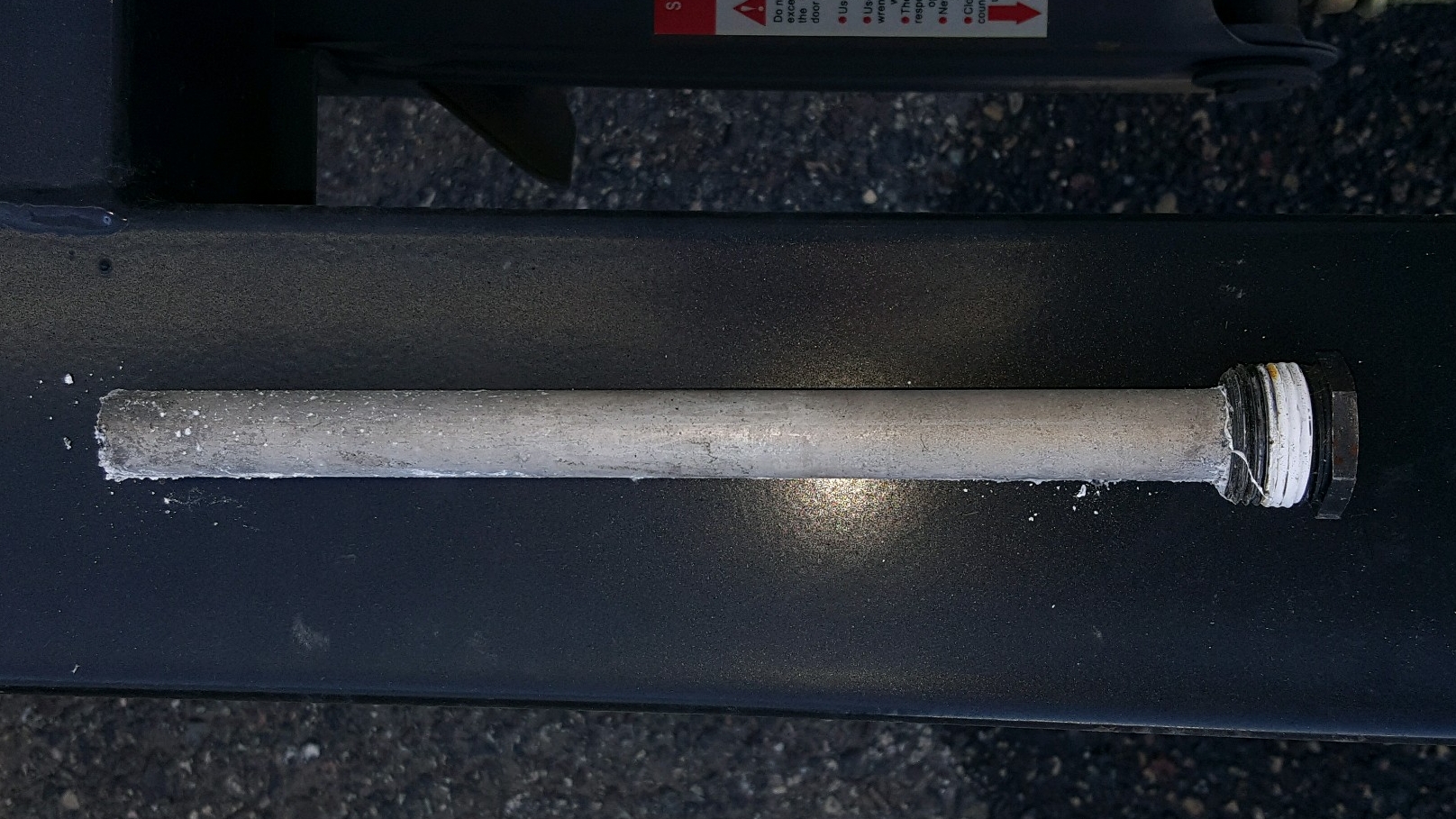
New Anode Rod
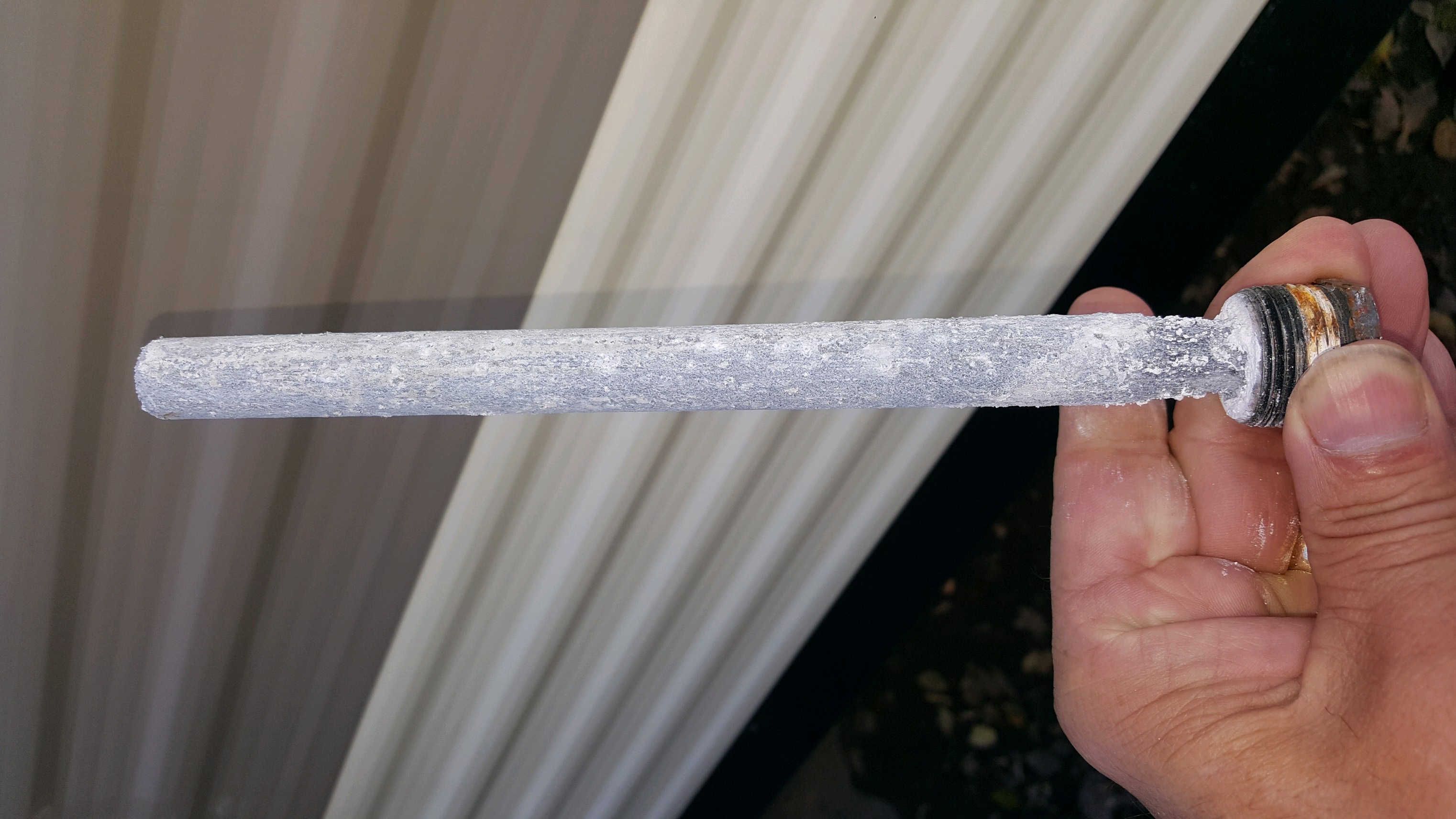
Used Anode Rod still in good shape.

Used Anode Rod that needs to be replaced.
Another distinguishing feature of the Suburban water heater is that it has a stainless steel tank. Inside that stainless steel tank there also is a layer of glass. This is important to note because, if you freeze your tank, you will break the glass and then have the potential for little specks of glass floating in your tank and through your water lines. If you see any specks like this in your water, the tank is ruined and needs to be replaced.
An Atwood water heater is identifiable by the white plastic drain plug on the lower left side of the water heater. Atwood water heaters also have an aluminum tank as opposed to the stainless steel tank in the Suburban.
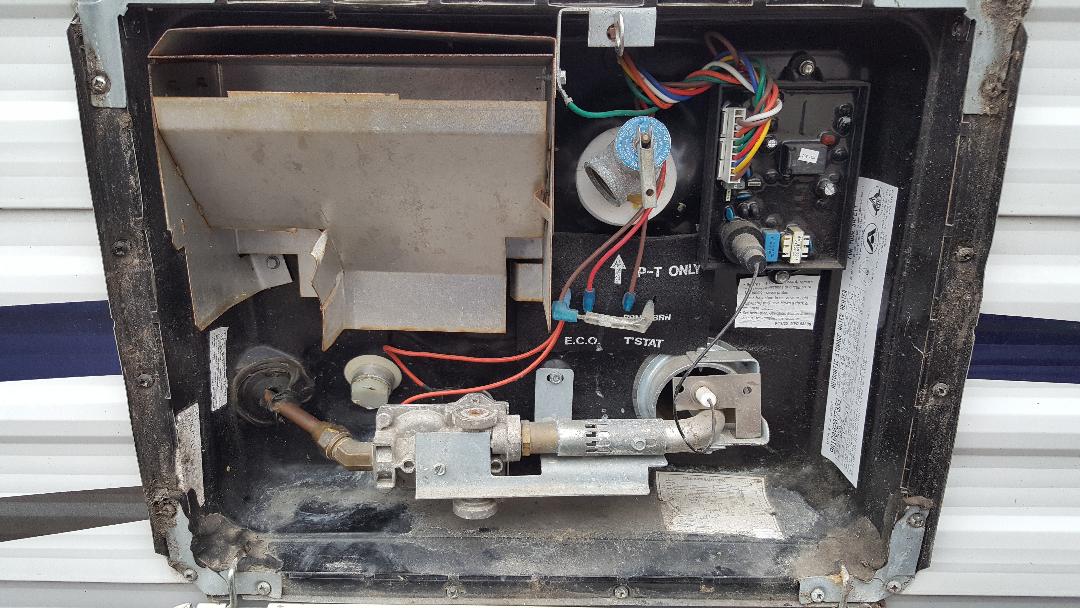
Atwood water heater. Note the white plastic drain plug in the lower left corner.
Operating an RV Water Heater on Propane
The first step in operating a water heater on propane is to light it. Some water heaters have to be lit manually and some have an igniter. The igniter switch is located inside the camper usually on the monitor panel or a stand alone switch with a red light next to it. When the water heater switch is turned to “on” a red light will come on. The water heater is now prepping to light. You may now hear your igniter starting to spark. It will spark for about 5 to 10 seconds. If the igniter fails to light, it will pause for a moment to allow any gas that may have built up to clear, then it will spark for two more cycles. If after three cycles spark the water heater fails to light, it will give up and not try again. To reset the water heater, you must turn the switch off, wait a couple of seconds and turn it back on again. The red light will turn off once the water heater lights. If the red light stays on, the water heater has failed to light.
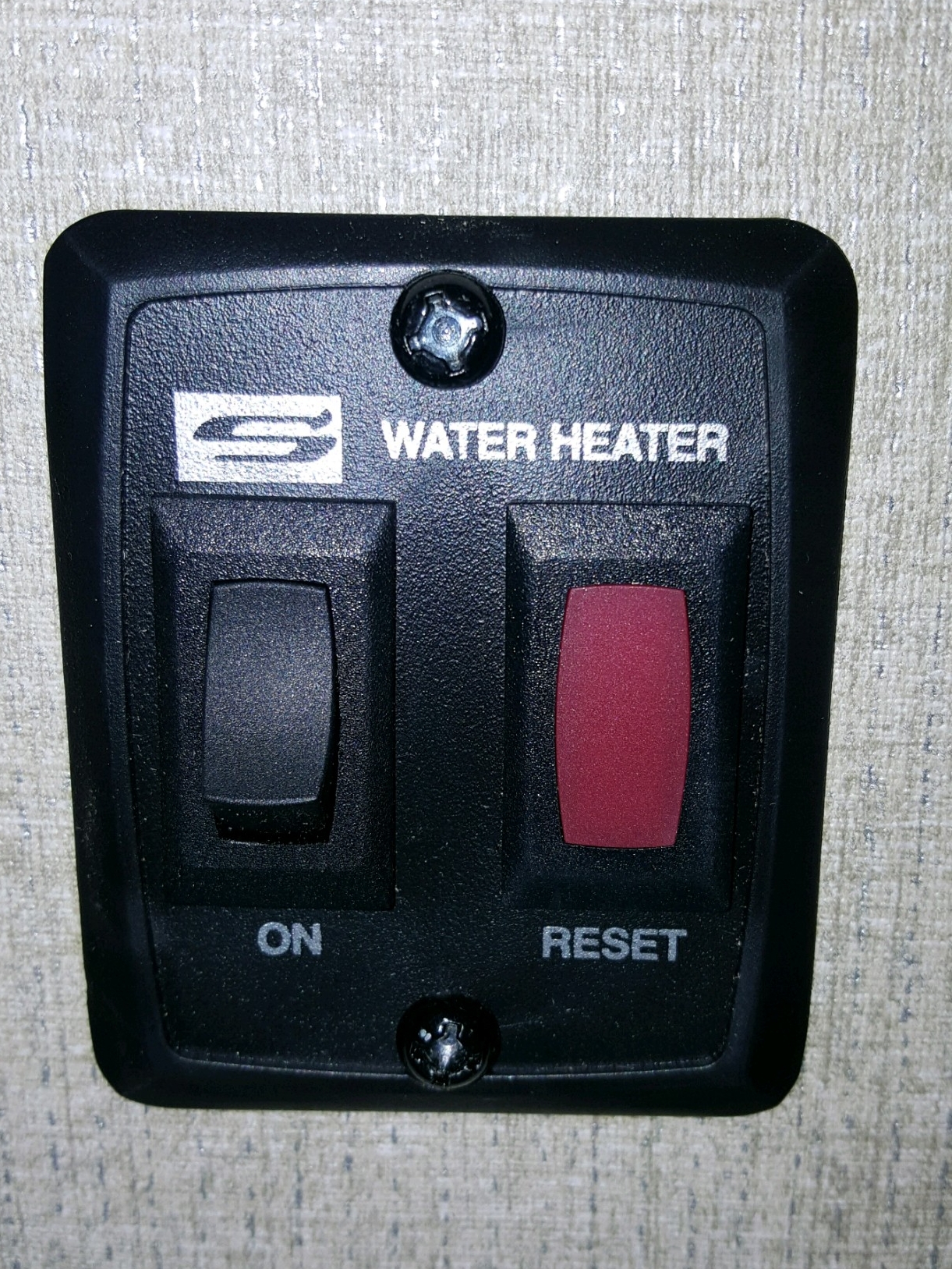
Water heater switch
Note: If your water heater fails to light check your propane tanks. Make sure you have propane and that the lines are open. Then light your stove to prime the gas lines (make sure you have gas in your lines). This should help your water heater to light on its first try.
If the water heater is already up to temperature it will not attempt to light. If you’re turning on your switch and it’s not sparking, go outside and put your hand on the pressure relief valve of the water heater. If its warm, you are up to temperature.
Once the water heater lights, it is normal to hear the burner. It sounds a little like a jet. The flame on the water heater should be a nice blue flame. If the flame is yellow or sooty (which doesn’t happen very often), it needs to be adjusted or cleaned. In this case, I recommend you call your service technician.
Operating an RV Water Heater on Electric
Some RV water heaters operate on electric (not all). There are a few different locations for the switch that turns on the electric heating element of an RV water heater.
Suburban water heaters have a switch located on the water heater itself, just to left of the drain plug/anode rod.

Electric switch located on water heater
Some campers also have a switch inside the camper to make it more convenient to turn on the electric heating element. This inside switch could be located anywhere. It is often in the kitchen, though sometimes in the bathroom, or often on the monitor panel itself. If your monitor panel has three buttons, it is likely one of those. Note: if you have two switches to turn the electrical heating element on, they BOTH need to be turned on for the heating element to work.
Atwood water heaters do not have a switch on the water heater itself. The switch for most Atwood water heaters is located on the monitor panel.
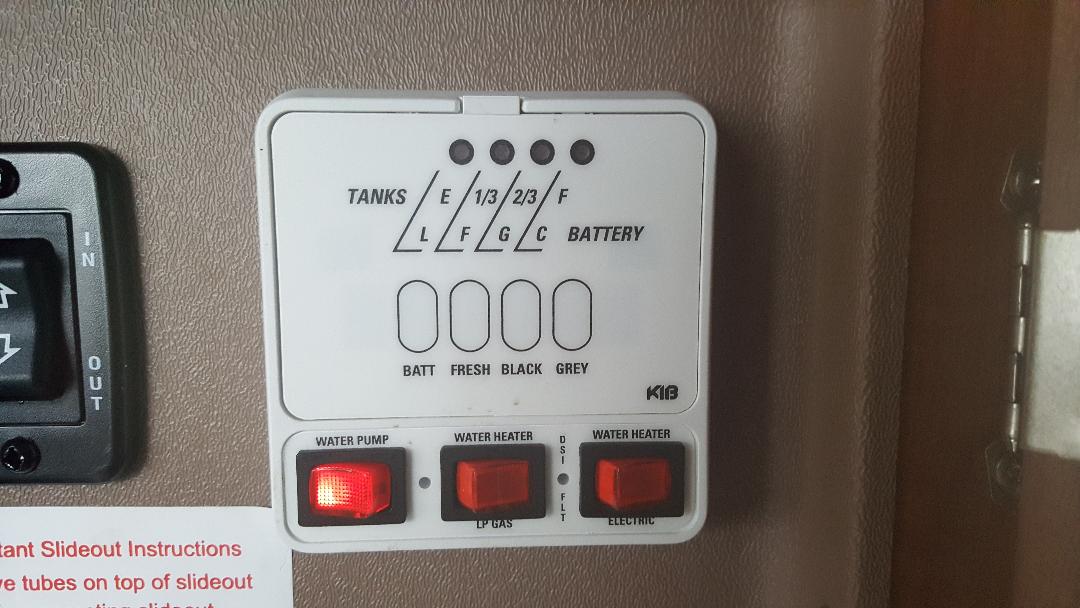
Water heater switch for both gas (center) and electric (right).
Important note! If you turn on your electric heating element, and do not have water in your heater, the element will melt in 30 seconds!
For this reason, whenever you’re going to empty your water heater, I recommend you either turn off the switch located on the water heater or turn off the circuit breaker to the water heater, to ensure that the electric heating element is not accidentally turned on.
To remove the drain plug, relieve the water pressure first. This can be done by opening any hot water faucet. If you forget to do this and just go to remove the drain plug, 6 to 10 gallons of water will try to blow out of the drain hole all at once. You will be soaking wet. Been there, done that.
I recommend ALWAYS draining your water heater before the air temperature goes below 32 degrees. If you attempt to leave water in your water heater below 32 degrees, and you lose power or run out of propane, you could split and ruin your water heater tank.
I also recommend pulling your drain plug and draining your water heater when you are not going to be using it for a while. When water is left in a closed vessel like a water heater or water tank for an extended period of time it can start to turn grey and smell bad. This can happen in as little as two weeks.
Happy Camping!



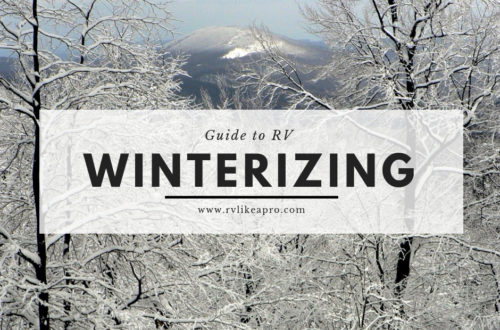
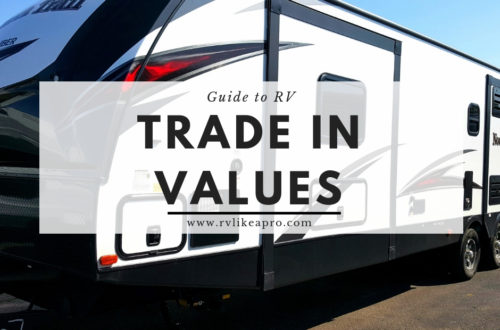
27 Comments
Pam
You make these tutorials seem so attainable! I love that as if you are going to spend the money on an RV, it’s super important to take care of it.
Amie Lara
You these repairs look so simple! RV life looks like fun!
Katie
Great tips for this new full-time RVer.
Christa
This is super helpful! I don’t currently own a camper, but I hope to one day.
Christa
I love how you make something that seems so intimidating look so doable. I hope to RV through the country one day!
Tricia Snow
I always learn so much from you! Thank you for the detailed posts and info! So helpful.
Stephanie Fleming
Going to share this for all my friends that have RV’s
Rosanna
Great tips for anyone with an RV!
Carrie
Great information! Thank you for sharing!
Monica
Yet another thing that is important to maintain and keep in mind when it comes to an RV. I know it’s silly, but I completely forgot about it. Great tips!
Jennifer Morrison
Wow! Huge difference in the anode rods! Preventative care is so important for this type of an investment! Great post!
Kathy Phillips
I love that you post these helpful things that will help people who don’t know. I am more of a visual learning and it’s great that you use both to accommodate those that are either visual and reader learners.
Sarah
Very information post! I’ll be sure to share it with anyone I know looking into RV water-heaters!
Clarissa Miller
I’ll be passing this info on to my sister as her family owns an RV. Thanks for providing such useful info!
Tonya @ the Writer Mom
Very detailed tutorial, as usual!
Arianny Rodriguez
Don’t know anything about RVs but this is very important information if you have one!
Maria
Great information. I’d love to travel in a RV one day.
Shar
Wow so much great information for those that go RV ing thank you for sharing!
Paulinr
This is great advice. Good tutorial for Rv maintenance.
Mary
I love your tutorials. Your photos are so clear and helpful! Thanks!
Nicki
Thank you so much!
Kathryn at QuestFor47
What great information. Thanks for breaking it down so even RV newbies can understand it!
Dee
Great tutorial. You guys make it look so easy!
T.M. Brown
Such a wealth of information!!! Great tips to keep on hand for anyone looking to travel by RV.
Laura Hardman
I sure wish I would have seen something like this a couple months ago. I had a Glamper until about 2 months ago. I never used the hot water heater, because I wasn’t sure how to start it. This was OK as I didn’t have to deal with water in my tanks. Great read though. Thanks for sharing
R J Stoner
I may….may have left some water in heater this winter, stored in polebarn. When I recently took out of storage and began to dewinterize it I filled fresh water tank and and opened the bypass line so water could now kinda flush heater. It would fill to a point then start leaking inside where tank is. I would quickly turn valve back to bypass and it stopped. Did my tank split at some point during storage or am I forgetting something? Guessing I “broke ” tank…sniff-sniff….thoughts
Nicki
Unfortunately it sounds like your tank may have split. If you can see the back of your water heater, you could peel the white foam insulation off the top of the water heater just to be sure.